#Community Service in Dallas
Explore tagged Tumblr posts
Text
When Utah Leaders say that taxpayers "will not" pay for a ballpark, they mean that $900 million taxpayer dollars will be used
Over the last few months, more and more stories have been popping up online that discuss whether Salt Lake City or the state of Utah should build a ballpark for some future MLB expansion team. Utah residents have therefore been asking local leaders who exactly would be paying for such a project. Rep. Ryan Wilcox, R-Ogden, has an answer. He wants residents to know that “local taxpayers will not be…
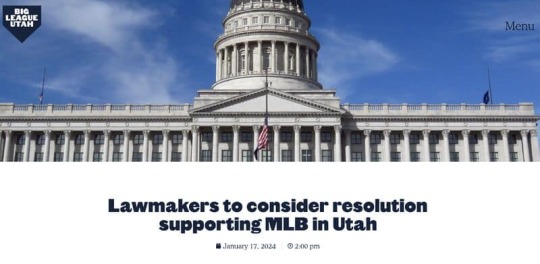
View On WordPress
#Accommodations and Services Tax#Arlington TX#Atlanta Braves#Beach Renourishment#Clark County#Cobb County#Dallas Cowboys#Energy Sales and Use Tax#Fairpark Area Investment and Restoration District#General Fund#Hotel Taxes#JC Bradbury#Miami Marlins#MLB#Moody#Nevada#Property Tax#Resort Communities Sales and Use Tax#Room Tax#Ryan Wilcox#Salt Lake City#Stuart Adams#Tampa Bay#Tampa Bay Rays#Telecommunications License Tax#Texas#Tourist Taxes#Transient Room Tax#Utah#Utah State Legislature
0 notes
Text


I have never seen anything like this- it's a mansion in the middle of a residential area. Built in 2000, in Dallas, TX, it has 0bds. 1ba, & is listed for $2.4M.

Surprise! The beautiful entrance foyer. Does anyone want to buy a Bitcoin Mining Center?


This looks like a break room.

According to the description: Formerly AT&T, this upgraded turnkey Tier 2 Data Center is a Full Liquid Cooling Immersion System. True multi-use facility whether you need AI services, cloud hosting, traditional data center, servers or even Bitcoin Mining - this site has it all! This property comes with all equipment included!

I don't even know what I'm looking at.
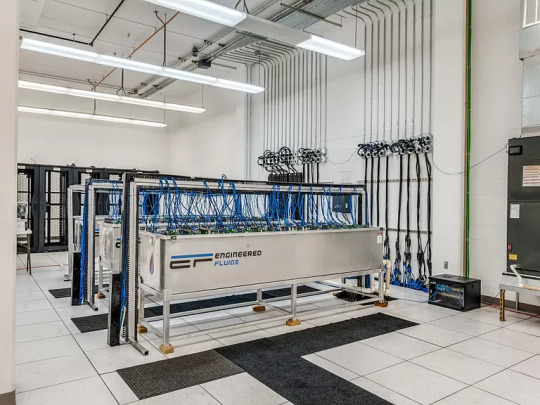
Steel Reinforced CMU, 3 Phase Power, 2 Power Grids, Backup Diesel Generator, Sites on Main Branch Lines of Communication Infrastructure for Dallas, Fire Suppression, Electronic Access, Bulletproof Glass, Double Safe Room Door, Raised Floor. There's a safe room?
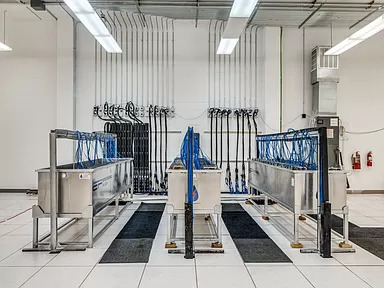

Upgrades include: 500kw 3 Phase Panels with digital monitors, Full Liquid Immersion System, 500kw Dry Cooler, 3 Phase Pump, 3 Slic Tanks, 5 New HVAC Units.





So, they can just sell all this? They said it's turn key. So, is it bitcoin or what? I wonder why they're selling it. That's suspicious- maybe it's not making money, anymore.

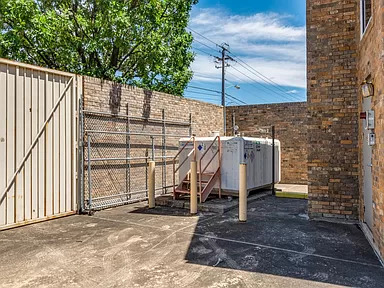
Out back. That's all they have, a wood stockade fence around the property?
https://www.zillow.com/homedetails/13229-Southview-Ln-Dallas-TX-75240/118222349_zpid/
#hidden in plain site house#weird homes for sale#bitcoin mining house for sale#house tours#business for sale
100 notes
·
View notes
Text
The Health Consequences of Being Led By The Stupidest Man Who Ever Lived
An old bacterial foe has been making itself very cozy in Kansas. Local health officials reported this month that the state is in the midst of a large outbreak of tuberculosis—reportedly now the largest outbreak of the disease ever documented in the United States. Ashley Goss, a deputy secretary at the Kansas Department of Health and Environment (KDHE), gave an update on the state’s TB outbreak to the Senate Public Health and Welfare Committee last week. Dozens of active and latent TB cases have been linked to the outbreak dating back to last year. And the danger has not yet passed. “The current KCK Metro TB outbreak is the largest documented outbreak in U.S. history, presently,” Jill Bronaugh, a spokesperson for KDHE, told local media outlet The Topeka Capital-Journal Friday. “This is mainly due to the rapid number of cases in the short amount of time. This outbreak is still ongoing, which means that there could be more cases.”[...] Globally, experts have blamed the pressures of the pandemic for the recent uptick in TB, particularly in weakening screening and prevention programs for the disease. At this point, however, there appears to be no clear explanation for the outsized number of cases in this local outbreak. And given the ongoing pause in communication from federal health agencies like the CDC, it’s unknown whether the CDC will even weigh in publicly anytime soon.
(full article)
If you've been paying attention, you already know what's coming next.
The Centers for Disease Control and Prevention is going dark, along with other federal agencies within the umbrella of the U.S. Department of Health and Human Services. This week, the returning Trump administration told these agencies to stop talking to the public—for how long, no one knows. The Washington Post first broke news of Trump’s sweeping directive late Tuesday evening. Staff at these agencies have been reportedly ordered to cease external communication for the time being. The move is the latest to unnerve outside experts about the direction of the country’s public health infrastructure under Trump.[...] Halting communication from federal health agencies like the CDC, NIH, and FDA during an administration transition is highly problematic, especially with active public health threats like the H5N1 outbreak in the U.S. and the Marburg outbreak in Tanzania, according to Krutika Kuppalli, an infectious disease physician in Dallas with experience in global health and pandemic preparedness. “A blanket suspension of external communication from health agencies is unusual and potentially harmful,” Kuppalli told Gizmodo. “Trust in institutions like the CDC is built on transparency and reliability. A lack of communication could lead to skepticism or distrust, making it harder to re-establish credibility when communication resumes.” There’s also past history to consider, as the Trump-led White House has a track record of muzzling its federal agencies and scientists. In the early days of Trump’s first term, the administration similarly ordered several agencies, including the United States Department of Agriculture, to temporarily stay quiet (much of this directive was quickly revised, however). More worryingly, the Trump administration prevented health officials from communicating with the press and public in the early months of the covid-19 pandemic, while his staff reportedly later tried to alter reports from the CDC concerning covid-19—allegedly with the goal of downplaying the harms of the pandemic.
(full article)
We were so busy wringing our hands about the latest strain of bird flu that the tuberculosis comeback tour is a genuine surprise. Guidance from the top might come in handy right now. Damn shame that King Baby muzzled the part of the government tasked with doing that. He's probably still sucking his thumb about Fauci.
18 notes
·
View notes
Text
Seven (+) Sentence Sunday
Tagged by super amazing @exhuastedpigeon @cal-daisies-and-briars @hippolotamus @disasterbuckdiaz @glorious-spoon @wikiangela @daffi-990 @tizniz @devirnis @watchyourbuck @hoodie-buck @loserdiaz @spotsandsocks and @diazsdimples. Thank you all so much!
Alright, so I know haven't been as active since dropping the first chapter of NFL Buck. I've just been sort of down because that same day, the Super Bowl Champs had their parade and rally, and just after it ended there was a mass shooting. My younger sister was there with some friends and they got away unharmed, but when she didn't answer my message for a long 30 minutes, I truly thought the worst. I've just been so sad and angry for Kansas City, for the US really and I just couldn't get into the spirit of writing. I'm not getting into the politics of it all today and my sister is coming for a visit soon, so I'm feeling marginally better. KC Strong.
First chapter of NFL Buck has been dropped, but everything else I've posted for this fic can be found here. Here is a snippet from the Eddie Begin's arc of NFL Buck.
Hurricane Harvey was relentless for almost four days, bullying southern Texas with unforgiving wind and an exurbanite amount of rain. Houston fire department and so many others worked day and night to help those who had not evacuated. It was absolute chaos, and it blew through Eddie’s entire life. The storms had wreaked havoc on the cell towers, which meant service was spotty to none and radios became the main source of communication for rescuers. By some miracle, though, the internet connection at the firehouse held strong. It was slow and glitched out here and there, reminding Eddie too much of his time in Afghanistan. He watched his infant son grow up through a screen, with his very upset wife barely holding on and his parents hovering nearby, souring the video calls even further. Christopher was no longer a whimpering baby in his mother’s lap but looking at his saddened son on a glitching iPad screen with a tense Maddie sitting beside him, was too familiar. Add in the argument he had with Buck just before, and the threat of danger just outside the firehouse, Eddie was back to being a scared 19-year-old in war riddled country. “Dad, grandma said we’re not going to visit Buck anymore. That he’s too busy. And Maddie tried to call him, but he didn’t answer and…” The eight-year old’s voice trails off, his lips trembling. Eddie bites his inner cheek hard. This was on him. He gave into his mother’s worries and demands about traveling through Texas during the hurricane. Helena was too stubborn and being his mother, she knew every damn button to push, and Eddie was tired of fighting. So, he reluctantly agreed to cancel the visit and his mother grinned a little too sharply before stating, “I’m sure Maddie will enjoy having her brother to herself.” Another ploy to take Christopher and Eddie fucking fell for it. Then his mother took it a step further by graciously telling Buck and Maddie herself, that Christopher would no longer be joining them in Dallas and to enjoy their time together for as long as they need it. Eddie knew his mother didn’t approve of his relationship with Buck, more so than his previous one with Shannon. The only reason she kept her mouth shut was the potential back lash of upsetting Christopher. But she already succeeded in having a hand in driving away Shannon and she probably believed she could do the same with Evan.
With this fic, there are a lot of canon events with twists. The usual timeline does not exists. But I hope you all enjoyed!
Tagging (no pressure): @bekkachaos @theotherbuckley @lover-of-mine @buddierights @try-set-me-on-fire @jesuisici33 @jeeyuns @aroeddiediaz @giddyupbuck @rainbow-nerdss @thewolvesof1998 @eddiescowboy @eddiebabygirldiaz @spaceprincessem @athenagranted @evanbegins @elvensorceress @malewifediaz @911onabc @911-on-abc @ladydorian05 @bigfootsmom @thekristen999 @spagheddiediaz @rogerzsteven @honestlydarkprincess @doublecheekeddiaz @buck-coded @prosperdemeter2 @lemonzestywrites @gayedmundodiaz @transboybuckley @nmcggg
#seven sentence sunday#tag game#my wip#911 abc#911 on abc#911 fic#buddie#buddie fic#evan buckley#eddie diaz#christopher diaz#nfl#quarterback buck#firefighter eddie#secret relationship#hurricane harvey#eddie begins au#prayers for kc#kc strong
88 notes
·
View notes
Text
As someone who lives in Texas (unfortunately) I find it SO FUNNY when people make keith overwhelmingly southern. Like, cmon yall. Texas history 101, the cowboy era ended a long ass time ago, most of us DONT wear cowboy hats anymore. Why the fuck would keith ride a horse???? Nobody does that unless they own horses??? And horses are incredibly expensive???
Like, I understand cowboy aus, and historical aus, but if Texas, in 2024, isn't like that (the stereotypes are so wild) then why would it be like that in approx 2314?
Very few wear cowboy hats or boots. Very few have horses, and NOBODY rides them to school, ffs. Keith is not a farmhand.
Some texas stereotypes that are true, however...
-yeah we say yall nonstop
-ain't, wouldja, couldn't've, etc.
-confederate flag is less common here, normally you see the "come and take it" or the "don't tread on me"
-if keith ever went to public school, 1/3 of his classmates or more are Latino
-most Texans know moderate amounts of Spanish
-we celebrate Cinco de Mayo, and most ppl think it's Mexican independence day (it's not)
-barbecue.
-chili WITHOUT BEANS YOU HEATHEN
-will fight over food, family, or football
-either you support the Dallas Cowboys or the Houston Texans. Any other team is sacrilege. Once you make this choice, it WILL have effects on your social life.
-football is basically king here lol, none of the other stuff in school gets nearly the funding
-people living in rural areas (like Keith's dad) often own guns, and not pistols either-- rifles and shotguns, usually
-NOBODY SAYS YEEHAW. at least not unironically
-Texans will ironically say yeehaw, rootin-tootin, etc bc we are aware of our history and think it's wack
-were not all racist, but everyone knows at least one person who is (usually an older family member)
-mind your gotdamn manners at the table. Get those elbows away from your food
-sir and ma'am for strangers
-open doors for old people. You don't have to be a man to do this.
-please and thank you is SO important, people will assume things about you otherwise
-if you don't have a church, you miss out on a lot of community (coming from a non-religious person)
-most people here are Baptist, on that note (Hispanic people contribute to the Catholic population, but still, Baptist is #1)
-internet service is awful unless you're in a city
-we WILL close all schools for 2 inches of snow/ice
-we laugh at hurricanes, and then do our best to help our Houston neighbors
-but everybody hates Houston and Dallas, unless you live there
-most people are okay with Austin, San Antonio, etc
-EL PASO IS TINY, AND HALF OF IT IS IN MEXICO (and is called Ciudad Juárez there)
-beer is god. And God has no problem with drinking. (According to beliefs here)
-gambling is illegal here, but we love it, so states like Oklahoma have built casinos RIGHT ON THE STATE BORDER so that we can drive a bit and gamble as we please
-everybody's dad drives a truck. Otherwise people assume he's got a small pp
#I can make more#if anyone is interested#i just love/hate texas stereotypes#we have a culture..#that can be used in writing..#but people just make shit up sometimes lol#im not mad about this i just think its weird#PLEASE ask me about Texas things for keith and his dad PLEASE#we in texas dont have much to be proud of these days#let me have keith#please#keith kogane#texan keith#voltron#vld keith#vld#voltron legendary defender
90 notes
·
View notes
Text
Major Update: Life...is a changing for me/us (and a sneak peek of Vault-Tec Rises!
Good afternoon!
I wanted to give you all an update on Vault-Tec Rises as well as an update on myself and some major life changes happening this year that may impact our season while the dust settles. Firstly, I'm more than halfway done with our next major feature length episode, "Vault-Tec Rises"...which is technically episode 16, set BEFORE Little Sanctuary of Horrors. It essentially is the story of how everyone came to be there in the first place, what Vault-Tec and the Enclave are really up to, and is the start of our last 4 episodes of the season as the Battle for Appalachia begins.
Secondly, I've shared quite a bit about the journey of these past 10 years with my husband Travis and his struggle with mental health. Many of you were kind of enough to support or share our GoFundMe to help take the pressure off the crushing debt we were under with mounting medical bills and his bills, none of which was covered by insurance fully. Trying to keep us afloat financially has been a long-term struggle of mine and here's in New Hampshire we just haven't been able to get ahead. After having to cancel some of his services last week as we couldn't afford them, we made some major decisions.
The next few months I'll be doing a lot of painting, landscaping, plastering and prepping to list our home on the market. Financially we can't afford to buy again for a while, so we're stuck renting. Based on what things are selling for in the area, I'm not too worried about getting out of it fairly quickly. We'll be moving to Texas, in between Dallas and Fort Worth in a really beautiful, new planned community where leasing and the overall lower cost of living will save us $20k a year which will allow us to not only fix our debt issue permanently, but also they have one of the leading centers in the country for C-PTSD. Once settled, I'd be able to get him more direct help he's needed that we just don't have access to out here.
Texas is going to be a big, big change for us...a huge move, but one I'm eager to make. Our backup editor is continuing to plug away at stories as well as I've had my hands full with work trying to keep the lights on (literally). I wanted to explain all of this with clear honesty so you know what I've been doing, what I'll be doing this year and why it often takes us so long to ship episodes to you. Your patient and support of me really, really means the world to me. The other benefit of this move is that once I'm not strangled hustling for work 7 days a week, I'll have more free time to actually create. Something I really want to do...as there are still two more seasons of Chad and some other projects I really want to share with you all.
I hope to have our 3-hour feature length Vault-Tec Rises completed in the next few weeks, so stay tuned. :) And if you can please excuse how hectic this year will be between selling and moving halfway across the country I'd appreciate it.
Much love to you all,
Ken
49 notes
·
View notes
Text
Detransitioner news
I have been thinking about detransitioners lately and wanted to compile articles I have been seeing. This will be a longer post and reblogged for part II as I hope to copy and paste brief portions of the articles under each headline.
Law firm for detransitioners opens in Dallas

In all of the controversy around gender transition, there is one group that is persistently marginalized by both the right and left. They are known as detransitioners — people who decide that they want to return to their birth gender, often after receiving years of interventional care, including surgery, to treat their gender dysphoria. Now, the nation’s first law firm focused solely on representing these patients — many of whom feel abused by a medical system that encouraged their treatment — has opened its doors in Dallas. It could forever change how hospitals and doctors approach what’s known as gender-affirming care.
Archive link
Fenway Community Health Center in Boston, the largest provider of transgender medicine in New England and one of the leading institutions of its kind in the United States, was named a defendant in a lawsuit filed last month. The plaintiff, a gay man who goes by the alias Shape Shifter, argues that by approving him for hormones and surgeries, Fenway Health subjected him to “gay conversion” practices, in violation of his civil rights. Carlan v. Fenway Community Health Center is the first lawsuit in the United States to argue that “gender-affirming care” can be a form of anti-gay discrimination. The case underscores an important clinical reality: gender dysphoria has multiple developmental pathways, and many who experience it will turn out to be gay. Even the Endocrine Society concedes that many of the youth who outgrow their dysphoria by adolescence later identify as gay or bisexual. Decades of research confirm as much. Gender clinicians in the U.K. used to have a “dark joke . . . that there would be no gay people left at the rate [the Gender Identity Development Service] was going,” former BBC journalist Hannah Barnes reported. Rather than help young gay people to accept their bodies and their sexuality, what if “gender-affirming” clinicians are putting them on a pathway to irreversible harm?
Due partly to Shape’s lifelong difficulty in accepting himself as gay, his lawyers are not taking the usual approach to detransition litigation. Rather than state a straightforward claim of medical malpractice or fraud, they allege that Fenway Health has violated Section 1557 of the Affordable Care Act (ACA), which bans discrimination “on the basis of sex” in health care. In 2020, the Supreme Court ruled in Bostock v. Clayton County that “discrimination because of . . . sex” includes discrimination based on homosexuality. Citing this and other precedents, Shape’s lawyers argue that federal law affords distinct protections to gay men and lesbians—upon which clinics that operate with a transgender bias are trampling. Shape grew up in a Muslim country in Eastern Europe that he describes in an interview as “very traditional” and “homophobic.” His parents disapproved of his effeminate demeanor and interests as a child. They wouldn’t let him play with dolls, and his mother, he says, made him do stretches so that he would grow taller and appear more masculine. At 11, Shape had his first of several sexual encounters with older men. “I was definitely groomed,” he recounts. Shape proceeded to develop a pattern of risky sexual behavior, according to his legal complaint. He told his medical team at Fenway Health about his childhood sexual experiences, calling them “consensual.” The Fenway providers never challenged him on this interpretation, he alleges. They never suggested that he might have experienced sexual trauma or, say, explored how these events might have shaped his feelings of dissociation. (The irony is that Fenway Health describes its model of care as “trauma-informed.”)
Archive link
Ontario detransitioner who had breasts and womb removed sues doctors
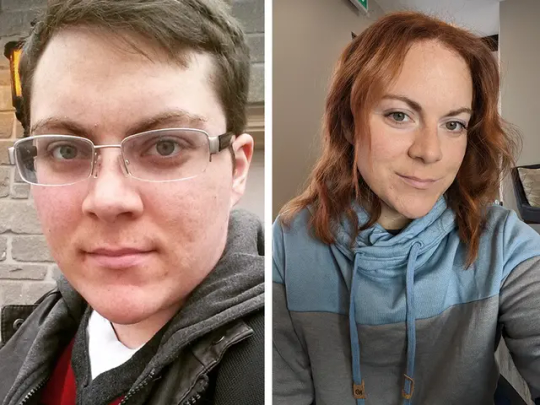
An Ontario detransitioning woman who had her breasts and womb removed to change her gender to male is suing medical and health practitioners for failing to consider other treatments during her mental health crisis before ushering her on an irreversible journey she regrets. Michelle Zacchigna, 34, of Orillia, Ont., north of Toronto, names eight health professionals, including doctors, psychologists, a psychotherapist and a counsellor in a lawsuit filed in Ottawa. None of the defendants, who work or worked at various clinics and institutions in southern Ontario, responded to requests for comment on the lawsuit prior to deadline. Four of the defendants have filed notices of intent to defend against the suit in Ontario Superior Court, but no statements of defense have been filed. None of the claims have been tested in court. Zacchigna said she faces an uphill battle in her lawsuit. “I’ve been under the impression that all medical malpractice suits are challenging. Doctors win the majority of cases in Canada,” she told National Post. “It’s very much a David vs. Goliath undertaking.” In her statement of claim filed in court in November, Zacchigna says she had difficulty forming relationships with classmates in elementary school and was often bullied. By the time she was 11, she engaged in self-harming behaviour, including cutting her arm with a knife. This continued into early adulthood. When she was 20, she tried to kill herself and she was referred by her family doctor for psychotherapy, where she was treated for social anxiety and clinical depression. She remained unhappy and depressed, and her mental health decline led to her dropping out of university, according to her claim. About a year into therapy, she engaged with an online community around gender nonconformity. “Michelle came to believe that her biological sex of female did not match her true gender identity of male,” her claim says. “She further came to believe that this mismatch between her biological sex and gender identity was causing her feelings of depression, self-harming behaviour and unease in her body, a mental health condition commonly known as gender dysphoria,” her claim states. This was the first time Zacchigna felt she was born in the wrong body, and she had not previously identified as male, her claim says. “However, as a result of what she read on the internet, she became convinced that she was a transgender man, and that once she embraced this new identity, her depression would subside.” Zacchigna started attending a support group in Toronto for people considering gender transition. A counsellor there told her of opportunities to proceed through a medical transition, her claim says. Zacchigna was invited to apply for medical intervention in 2010. The counsellor wrote a recommendation letter outlining a medical history that didn’t fully match her real past, the claim says. The counsellor didn’t recommend any alternatives, or seek confirmation of Zacchigna’s own diagnosis of gender dysphoria. Her regular therapist also wrote a recommendation for transition treatment, saying Zacchigna was an “ideal candidate for hormone therapy,” even though the therapist had no previous transgender clients, according to the claim.
Part II incoming.
#detrans#detransition#desist#ftm detransition#mtf detransition#LGB#gender critical#gender critical feminism#gender ideology
77 notes
·
View notes
Text
Three illegal migrants with the vicious Venezuelan prison gang Tren de Aragua abducted a man and two kids in Texas — then executed the older victim and dumped his body on the side of the road, authorities say.
Carl Luis Zambrano-Bolivar, 26, Jhonata Nahin Toro Gonzalez, 22, and Ehiker Morales Mendoza, 38, were recently arrested for the murder of Nilzuly Enrique Arneaud-Petit, 33, who was found dead Aug. 24 with a single gunshot wound to the head in Farmers Branch just outside Dallas, DHS officials said.
While police were responding to a report of a body, they learned of two juveniles possibly related to the victim walking on a service road about 10 miles away, according to the Farmers Branch Police Department.
Investigators caught up with the minors and were told the kids and Arneaud-Petit had been “forcibly taken by several unknown suspects from an apartment complex” in Dallas earlier that night, police said.
The suspects drove Andreau-Petit and the juveniles to the location in Farmers Branch, where they fatally shot the 33-year-old man, police said. The kids told investigators the suspects then fled with them in a sedan before releasing them on the service road in nearby Lewisville.
Andreau-Petit was an associate of the violent gangsters “and allegedly involved in a complex ATM theft operation targeting several locations nationwide,” police said.
He was accused of withholding money from other group members, which led to his kidnapping and execution, police said.
TdA members Zambrano-Bolivar and Toro Gonzalez were arrested in Aurora, Colo., in September by Denver’s Immigration and Customs Enforcement’s Enforcement and Removal Operations team, DHS officials said.
A third member of the feared prison gang, Mendoza, was busted Oct. 11 in Las Cruces, NM.
All three were in the country illegally, authorities said.
A fourth man also wanted in the murder, 29-year-old Jhonny Jesus Martinez Serrano, remains at large.
The three men in custody are expected to be extradited to Texas to be prosecuted on charges of capital murder and aggravated kidnapping, according to Homeland Security Investigations.
“Violent criminal organizations and transnational gangs like Tren de Aragua are a plague upon our communities that rely on fear and violence to [rain] terror on hardworking and law-abiding residents,” said HSI Dallas acting Special Agent in Charge Travis Pickard.
“We have sent a resounding message that we are united in our efforts to dismantle these violent criminal networks and put an end to the lawlessness that they spread,” he added.
The violent gang has been terrorizing cities across the US.
In August, the ruthless group made national headlines when frightening video capturing some of its gun-wielding members storming through an Aurora apartment complex went viral.
The Post was the first to report on TdA’s infiltration of Aurora, its takeover of several poorly maintained apartment complexes and its top leader, nicknamed “Cookie,” who was involved in at least two violent crimes.
TdA also has been blamed for a surge in violent crime in such tourist meccas as Times Square in Manhattan.
#nunyas news#their home countries are cracking down on them#so they're coming here#where people are defunding the police
12 notes
·
View notes
Note
Sorry to bother you and I don't want to stir up drama, but your post about 0ettinger got me REALLY curious and I can't find anything by looking him up so... what did he do? 👀👀👀
First, it's never a bother to answer questions! I love talking about hockey. I would record a new podcast episode every day if my cohost would go for it. Now, onto the question.
Don't worry, there's nothing bad about Oettinger! As far as I know, Oettinger is great! When I was talking about problematic men, I was referring to Stars backup goalie, Casey DeSmith. When DeSmith was in college, he was arrested for assaulting a woman (who reportedly was a former girlfriend). He took a diversion agreement which is kind of a type of plea deal where he did admit to assaulting the woman. He avoided jail time but he was on probation for a year and had to do community service and drug and alcohol counseling during that time period. I'm including a link to a local news article from the time that gives more backstory, but be warned it does include details on the assault from the police report.
When he was signed, a lot of Dallas fans were unhappy because of his history. I already felt like the team made a huge mistake not re-signing Wedgewood, and I was certainly not impressed by the character I've seen of his replacement. I've chosen to address DeSmith's presence on the team by not referring to him in the podcast by name - if I have to talk about his goaltending, he has been "the backup goalie". But as my husband pointed out, we have Oettinger and then we have Not Oettinger (or Noettinger) which is a much cleverer way to refer to him when I do have to acknowledge his existence.
9 notes
·
View notes
Text

John F Kennedy, Dallas, Tex, Nov 22, 1963
* * * *
LETTERS FROM AN AMERICAN
November 22, 2024
Heather Cox Richardson
Nov 23, 2024
“It all began so beautifully,” Lady Bird remembered. “After a drizzle in the morning, the sun came out bright and beautiful. We were going into Dallas.”
It was November 22, 1963, and President John F. Kennedy and First Lady Jacqueline Kennedy were visiting Texas. They were there, in the home state of Vice President Lyndon Baines Johnson and his wife, Lady Bird, to try to heal a rift in the Democratic Party. The white supremacists who made up the base of the party’s southern wing loathed the Kennedy administration’s support for Black rights.
That base had turned on Kennedy when he and his brother, Attorney General Robert F. Kennedy, had backed the decision of the U.S. Court of Appeals for the Fifth Circuit in fall 1962 saying that army veteran James Meredith had the right to enroll at the University of Mississippi, more commonly known as Ole Miss.
When the Department of Justice ordered officials at Ole Miss to register Meredith, Mississippi governor Ross Barnett physically barred Meredith from entering the building and vowed to defend segregation and states’ rights.
So the Department of Justice detailed dozens of U.S. marshals to escort Meredith to the registrar and put more than 500 law enforcement officers on the campus. White supremacists rushed to meet them there and became increasingly violent. That night, Barnett told a radio audience: “We will never surrender!” The rioters destroyed property and, under cover of the darkness, fired at reporters and the federal marshals. They killed two men and wounded many others.
The riot ended when the president sent 20,000 troops to the campus. On October 1, Meredith became the first Black American to enroll at the University of Mississippi.
The Kennedys had made it clear that the federal government would stand behind civil rights, and white supremacists joined right-wing Republicans in insisting that their stance proved that the Kennedys were communists. Using a strong federal government to regulate business would prevent a man from making all the money he might otherwise; protecting civil rights would take tax dollars from white Americans for the benefit of Black and Brown people. A bumper sticker produced during the Mississippi crisis warned that “the Castro Brothers”—equating the Kennedys with communist revolutionaries in Cuba—had gone to Ole Miss.
That conflation of Black rights and communism stoked such anger in the southern right wing that Kennedy felt obliged to travel to Dallas to try to mend some fences in the state Democratic Party.
On the morning of November 22, 1963, the Dallas Morning News contained a flyer saying the president was wanted for “treason” for “betraying the Constitution” and giving “support and encouragement to the Communist inspired racial riots.” Kennedy warned his wife that they were “heading into nut country today.”
But the motorcade through Dallas started out in a party atmosphere. At the head of the procession, the president and first lady waved from their car at the streets “lined with people—lots and lots of people—the children all smiling, placards, confetti, people waving from windows,” Lady Bird remembered. “There had been such a gala air,” she said, that when she heard three shots, “I thought it must be firecrackers or some sort of celebration.”
The Secret Service agents had no such moment of confusion. The cars sped forward, “terrifically fast—faster and faster,” according to Lady Bird, until they arrived at a hospital, which made Mrs. Johnson realize what had happened. “As we ground to a halt” and Secret Service agents began to pull them out of the cars, Lady Bird wrote, “I cast one last look over my shoulder and saw in the President’s car a bundle of pink, just like a drift of blossoms, lying on the back seat…Mrs. Kennedy lying over the President’s body.”
As they waited for news of the president, LBJ asked Lady Bird to go find Mrs. Kennedy. Lady Bird recalled that Secret Service agents “began to lead me up one corridor, back stairs, and down another. Suddenly, I found myself face to face with Jackie in a small hall…outside the operating room. You always think of her—or someone like her—as being insulated, protected; she was quite alone. I don’t think I ever saw anyone so much alone in my life.”
After trying to comfort Mrs. Kennedy, Lady Bird went back to the room where her husband was. It was there that Kennedy’s special assistant told them, “The President is dead,” just before journalist Malcolm Kilduff entered and addressed LBJ as “Mr. President.”
Officials wanted LBJ out of Dallas as quickly as possible and rushed the party to the airport. Looking out the car window, Lady Bird saw a flag already at half mast and later recalled, “[T]hat is when the enormity of what had happened first struck me.”
In the confusion—in addition to the murder of the president, no one knew how extensive the plot against the government was—the attorney general wanted LBJ sworn into office as quickly as possible. Already on the plane to return to Washington, D.C., the party waited for Judge Sarah Hughes, a Dallas federal judge. By the time Hughes arrived, so had Mrs. Kennedy and the coffin bearing her husband’s body. “[A]nd there in the very narrow confines of the plane—with Jackie on his left with her hair falling in her face, but very composed, and me on his right, Judge Hughes, with the Bible, in front of him and a cluster of Secret Service people and Congressmen we had known for a long time around him—Lyndon took the oath of office,” Lady Bird recalled.
As the plane traveled to Washington, D.C., Lady Bird went into the private presidential cabin to see Mrs. Kennedy, passing President Kennedy’s casket in the hallway.
Lady Bird later recalled: “I looked at her. Mrs. Kennedy’s dress was stained with blood. One leg was almost entirely covered with it and her right glove was caked…with blood—her husband’s blood. She always wore gloves like she was used to them. I never could. Somehow that was one of the most poignant sights—exquisitely dressed and caked in blood. I asked her if I couldn’t get someone in to help her change and she said, ‘Oh, no. Perhaps later…but not right now.’”
“And then,” Lady Bird remembered, “with something—if, with a person that gentle, that dignified, you can say had an element of fierceness, she said, ‘I want them to see what they have done to Jack.’”
LETTERS FROM AN AMERICAN
HEATHER COX RICHARDSON
#Letters From An American#Heather Cox Richardson#Lady Bird Johnson#history#American History#assassination#JFK#John F. Kennedy#Dallas Texas#racism#segregation
9 notes
·
View notes
Text
The Great Migration & "The Negro in the city" lantern slides, 1922?
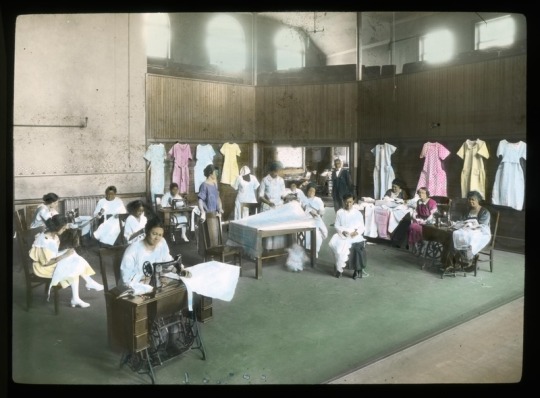
Women at dressmaking class, St. Mark's Church, Chicago, 1922?
This set of lantern slides documents the daily life of African Americans during the early years of the Great Migration from the rural American South, as well as outreach activities conducted by the Methodist Episcopal Church (MEC) to assist them with finding work and social services. The first slides show scenes of Black sharecroppers picking cotton and processing sugar. Other slides show African Americans at work in northern cities.
A majority of the slides show African American Methodist Episcopal church buildings in cities, such as Baltimore, Chicago, Dallas, New York, Philadelphia, and Washington, D.C., as well as community houses run by the MEC. Other slides show African Americans engaged in job training, such as sewing and dressmaking, and in worship and recreational activities. More information from the Newberry catalog

Congregants at morning service, East Calgary Methodist Episcopal Church, Philadelphia, Pennsylvania, 1922?
In “The Great Migration, Reconsidered,” scholars Dr. Lionel Kimble, Dr. Courtney Pierre Joseph, and Dr. Matthew Cressler examine the complex legacy of this period.
youtube
Dr. Joseph notes that many Black families did not stay in the original city they arrived in, but continued to move around the country. “Black people are migratory and they move a lot to where best suits their needs and desires… Voting with your feet, being able to go where your voice can be heard.” These lantern slides show us an early snapshot of the Great Migration across the nation, some people on their first stop of many, with images of labor, family, and hope.
View "The Negro in the city" lantern slides
Browse all of Newberry Digital Collections
#newberry library#great migration#lantern slides#black history#libraries#archives#collection stories#chicago
29 notes
·
View notes
Text
The late Senator Howard Baker said of the CIA during the Watergate scandal that “there are animals crashing around in the forest. I can hear them but I can’t see them.” Carlos Marcello and the Chicago Outfit, and their friends in the defense contracting world, were hardly the only ones with grudges against John F. Kennedy, nor would they have had the means to act against him alone. The training at the Pontchartrain property was publicly exposed by the Kennedys’ mid-1963 turn against the CIA’s anti-Castro Cuban training program, and between the TFX contract, the new post-Crisis retreat in the fight against communism, the Kennedys’ tentative support for civil rights, and the possibility of indictment in a second Kennedy term under newly enhanced prosecution statutes, the Kennedy administration was kicking up a great deal of shit with its ostensible coalition allies despite its continued relative popularity with the public.
By the time Kennedy visited the South in the fall of 1963, credible plots against his life were tracked in Miami and Chicago; the Secret Service still permitted an open-air motorcade, despite an increasingly long and obvious enemies list.
[...]
The murdered prospector’s ex-employer, General Dynamics, and other military contractors have prospered in the 2020s just as they did in the 1980s. While the Dow Jones has been down six percent over the last 12 months, and the U.S. is still under threat of economic recession, GD stock is up more than 17 percent. On Jan. 4, Toronto’s National Post reported that “Super Bison” armored vehicles had arrived in Ukraine after manufacture by GD in London, Ontario. On Jan. 6, Secretary of State Tony Blinken announced $3.75 billion in new military aid for Ukraine that includes missiles co-produced by Raytheon and General Dynamics, which can now be fitted for use on ex-Soviet launchers used by Ukraine. Jack Kennedy is long dead, but Convair is doing just fine, as are all of its friends.
5 notes
·
View notes
Text

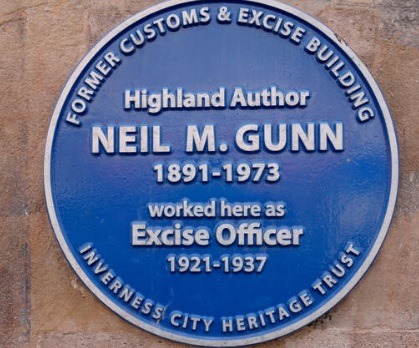

On November 8th 1891 the author Neil M Gunn was born.
Neil Miller Gunn, was born in Dunbeath, a small fishing and crofting community in Caithness, North East Scotland. Although he was educated in Galloway, he grew up with a love of the Highlands and Highland culture and, as an adult, he returned to the North East to live and work.Gunn, the son of a fisherman, was born at a time when the herring fishing industries of Scotland were beginning to die out, and much of Highland culture was in decline, with a falling population and growing unemployment.
Gunn saw that Highland culture was also under threat as the old ways were forgotten, and fewer people spoke Gaelic or Scots, so traditional songs and stories were beginning to disappear. Reflecting this trend, Gunn himself spoke only English, although in his writing he used the rhythms and syntax of Gaelic speech to give a sense of the people and communities he depicted.
For a number of years, Gunn worked in London for the Civil Service before joining the Customs and Excise in 1911. Returning to the Highlands he worked as an Excise Officer until 1937, when increasing financial success allowed him to become a full-time writer. This writing also extended to journalism and, in the 1930s and early 40s, he wrote articles for publications such as the Scots Magazine. In this he argued that the Highland way of life was worth preserving and should be supported to stop it disappearing altogether, a position which he also expressed politically through his involvement with the SNP.
Gunn is best known, however, for his novels, the first of which, The Grey Coast was published in 1926. His early novels reveal a bleak, often harsh, portrait of the communities he knew so well, although through time his fiction shifted to reveal a more hopeful vision of Highland experience. These more positive portraits include Highland River , The Silver Darlings and Young Art and Old Hector , novels which remain his most widely-read work.In 1956 he published his final book, The Atom of Delight, a spiritual autobiography which traced his interest in Zen Buddhism.
Neil M Gunn died on January 15th 1973 at Raigmore Hospital, Inverness and is buried beside his wife, Jessie Dallas Frew at Mitchell Hill Cemetery Dingwall.
Dunbeath Heritage Centre in Caithness houses a permanent exhibition of his life and work. His book, Whisky and Scotland is still a popular read among Whisky aficionados, although I have read some comments saying it needs updated, well unless he somehow rises from the dead I’m afraid it will not happen. The statue in the pic, called Kenn with Salmon, after his novel, was unveiled in 1991 at Dunbeath. He is also remembered at on Lawnmarket Royal Mile Edinburgh with the quote “Knowledge is high in the head, but the salmon of wisdom swims deep”
Read more about him here https://scotchwhisky.com/.../whisky.../20306/neil-m-gunn/
6 notes
·
View notes
Text
The Importance of Mobile-Friendly Website Design for Dallas Entrepreneurs
Introduction
In an era where smartphones have become ubiquitous, the importance of mobile-friendly website design cannot be overstated—especially for entrepreneurs in Dallas. As more people rely on their mobile devices for information, shopping, and communication, having a website that caters to these users is no longer optional; it’s essential. This article will explore the various facets of mobile-friendly website design, its direct impact on Local SEO Dallas, and how it relates to overall business success.
youtube
In this comprehensive guide, we’ll delve into the significance of responsive design, user experience, search engine optimization (SEO) strategies specific to Dallas entrepreneurs, and much more. By the end of this article, you will understand why investing in a mobile-friendly website design is crucial for your business growth.
The Importance of Mobile-Friendly Website Design for Dallas Entrepreneurs
Mobile-friendly website design refers to the ability of a site to adapt seamlessly across various devices such as smartphones and tablets. For https://676fa9456fb3f.site123.me Dallas entrepreneurs, this means creating a user experience that is not just functional but also engaging on smaller screens.
Why Mobile Matters More Than Ever
With over 50% of all web traffic coming from mobile devices, businesses that neglect to optimize their sites risk losing potential customers. As per studies conducted by Google, 61% of users are unlikely to return to a mobile site they had trouble accessing or navigating.

A Changing Digital Landscape
The digital landscape is constantly evolving. Social media platforms like Instagram and Facebook drive traffic through mobile devices more than ever before. If your website isn’t optimized for mobile use, you're essentially closing doors on potential opportunities.
User Experience: The Key to Retention
User experience plays a pivotal role in retaining visitors on your site. A well-designed mobile interface can lead to better engagement rates and lower bounce rates.
Responsive vs Adaptive Design Responsive Design: This approach allows the layout to change dynamically based on screen size. Adaptive Design: Instead of fluid changes, adaptive designs serve different layouts depending on predefined screen sizes.
Both methods have their pros and cons; however, responsive design tends to be favored for its flexibility.

youtube
Local SEO Dallas: A Game Changer for Entrepreneurs
Local SEO is crucial for entrepreneurs wanting to attract nearby customers. It involves optimizing your online presence so that potential customers can find you when they search for products or services relevant to your business.
The Role of Mobile-Friendliness in Local SEO
Google considers mobile-friendliness as a ranking factor in local searches. Therefore, if your website isn’t optimized for mobile devices, you could be missing out on valuable local traffic.

youtube
Optimizing Your Site for Mobile Local Searches Use Local Keywords: Incorporate keywords relevant to your locality such as "SEO Services Dallas" in title tags and meta descriptions. Google My Business: Ensure
2 notes
·
View notes
Text
By: John McWhorter
Published: Dec 12, 2024
Since Monday, when a jury found Daniel Penny not guilty in the death of Jordan Neely on a New York City subway, the conversation has threatened to go off the rails.
Penny was the man who stepped up when Neely caused a commotion on the F train, shouting at passengers, “I’m fed up. I don’t mind going to jail and getting life in prison. I’m ready to die.” Penny put him in a chokehold and held him for about six minutes. Neely died from compression to his neck, according to the medical examiner.
It should have been a story about the horror of a mentally ill person abandoned by the city and left to fend for himself in subway tunnels or on street corners, or about how scary it can be for those around him to navigate the wreckage, or about how one 24-year-old Marine veteran tried to protect a group of strangers, taking action that ended in unintended tragedy.
But Penny is white and Neely, 30, was Black. So instead it became a story of race — and all the more so after the jury’s verdict — a variation of Daniel Pantaleo going free after choking Eric Garner in 2014. But that’s not what happened here, and I wish those describing Penny or his acquittal as racist might consider things from another vantage point.
Chivona Newsome, a founder of Black Lives Matter of Greater New York and a recent congressional candidate, said, “They will not find a white man guilty of killing a Black man in modern-day America.” Her brother and fellow founder, Hawk Newsome, declared that “the K.K.K., the Klansmen, the evil in America, got another victory,” and after the verdict made a call to “Black vigilantes.” Supporters of Black Lives Matter and the Rev. Al Sharpton’s National Action Network were at the courthouse for Penny’s trial every day, chanting, among other things, “If we don’t get no justice, they don’t get no peace.” The NAACP declared that “the acquittal of Daniel Penny in the death of Jordan Neely has effectively given license to vigilante justice to be waged on the Black community without consequence.” Tim Wise, a senior fellow at the African-American Policy Forum and a prominent speaker on antiracism, called Penny a “racist, classist, ableist murderer.”
The claim that Penny acted out of racism implies that if he had seen a white man scaring subway passengers in that way, he either would not have restrained the man at all or would have done so for a shorter time.
I am unaware of how we could know such a thing. Some will think of the white Minneapolis police officer Derek Chauvin kneeling on George Floyd as he begged for his life. The common assumption was that Floyd’s race informed Chauvin’s behavior. How then should we think of the case of Tony Timpa, a white man who died four years earlier under very similar circumstances in Dallas?
To claim Penny was acquitted because he is white implies also that if he were Black, he would have been convicted and imprisoned.
I am unaware of how we could know this, either. Any lawyer defending a Black Marine veteran in this instance would be sure to invoke his service to his country and to his fellow passengers, and to warn jurors against making him another statistic in the annals of judicial bias. Given the circumstances and the setting, it seems likely to me that they would take that responsibility seriously.
This is one of those subjects that leads readers to tell me they like my newsletters “but….” When I raise these ideas, in conversation or print, I am often told that I’m missing the centrality of racism in the American experience, or that Penny’s racism is too obvious to require discussion or proof. I wish those who believe that would consider that reality is more complex than just “America hates Black people.”
For a long time, that was clearly true. Even 40 years ago, the evidence was still there. But it’s easier to pretend change never happens than to recognize that it unfolds slowly. The Pew Research Center reported in 2017 that about one in four recently married Black American men had a spouse from another race or ethnicity, as did more than one in 10 recently married Black women. The same report said that in 1990, 63 percent of non-Black Americans said they would be opposed to a close relative marrying a Black person; that figure has since dropped to only 14 percent. Hip-hop, the Blackest music in America, is now a staple at some of the whitest weddings, as I have often observed.
American English grows Blacker by the decade — and how you speak casually is who and what you are. A Black man was president for not one but two terms. While time has blunted the post-2020 hegemony of D.E.I. and racial reckoning, anyone who doubts academia and the arts, especially, are now more antiracist than anything imaginable in 2019 is not an academic or an artist.
America does not hate Black people.
If Daniel Penny had been Black, there would have been no one outside the courthouse protesting vigilante justice. Those now invoking the K.K.K. would have considered the genuine terror of being enclosed in a subway car with someone who is visibly unstable — a situation of which I have written as a father who rides the F train often. They would have readily perceived that a man can kill by accident while trying to do good.
Penny’s blond all-American looks seem to have invited a kind of punitive typecasting, and a very narrow view of what happened on that train: A white man killed a Black man. This reductive perspective discourages the empathic spirit that celebrated by the civil rights leaders who created our America.
*
In the spirit of seeing people unfamiliar to us in a human light, Jenny Lyn Bader’s new play, “Mrs. Stern Wanders the Prussian State Library,” portrays the historian and philosopher Hannah Arendt finding an intellectual and spiritual connection with the German Gestapo guard who arrests her for allegedly illegal research. It is a 90-minute lesson on perceiving humanity and even dignity in all people under even the toughest of conditions.
--
By: Rafael A. Mangual
Published: Dec 9, 2024
New Yorkers concerned about public safety are breathing a sigh of relief today, after a Manhattan jury acquitted Daniel Penny of criminally negligent homicide in the May 2023 death of Jordan Neely. Aside from small groups of far-left agitators calling for Penny’s head, many observers seemed skeptical from the get-go of Manhattan district attorney Alvin Bragg’s effort to imprison Penny for physically restraining Neely, who burst into a New York City subway car in the midst of a psychotic episode and began threatening and menacing riders.
The public skepticism was well founded: prosecutors should never have brought this case in the first place.
Neely was a repeat criminal offender. He had racked up some 42 prior arrests, including for assaults on women on the subway. He had a documented history of serious mental illness, worsened by repeated drug use. This isn’t to say, of course, that he deserved to die. It is to say that Neely fit the definition of a ticking time bomb. Instead of being put in jail or compelled to enter an inpatient psychiatric-care facility, he was permitted to roam the streets. This was a choice, which means that the situation in which Penny and his fellow commuters found themselves in May 2023 was the byproduct of the government’s failure—one of many such failures (lest we forget about Ramon Rivera’s alleged stabbing spree just last month).
Forcing commuters to deal with the fallout from unwise policy choices is bad enough. But for the government then to prosecute someone for a good-faith effort to navigate the dangerous situation created by those choices is a step too far for many New Yorkers.
The Penny prosecution is even harder to swallow given the evidence suggesting that perception of Neely as a threat was reasonable; that the decision to restrain him in response was also reasonable; that, whatever one makes of his specific method of restraint, Penny was not trying to kill Neely (he released him as soon as he became aware that Neely had lost consciousness and could no longer fight); and that Penny’s lack of criminal history, military service, and cooperation with authorities undermine any suggestion that the public would benefit from his incarceration.
Adding to the sense of unfairness here is the reasonable belief that Penny’s prosecution was politically motivated—the byproduct of a calculation made in response to the racialized protests following Neely’s death. (It’s worth noting, too, that Bragg rode into the DA’s office on a magic carpet of promises to be more lenient toward the kind of repeat offenders New Yorkers are sick of dealing with.)
Why would Bragg, who so strongly believes in restricting the use of prosecutions to cases with “real” public safety implications, put so much effort into trying to convict a college student and Marine Corps veteran with no criminal history for a death he obviously didn’t mean to cause, which occurred in an attempt to protect his fellow New Yorkers from Neely? Is there a better answer to this question than, because it was the most politically beneficial move for a DA who didn’t want to risk losing his “progressive” base in his reelection bid? The Penny case certainly isn’t Bragg’s first politically motivated prosecution with no obvious public-safety upside.
Making matters worse, the prosecutor who litigated the case against Penny once touted her decision to go easy on a robber who accidentally killed an elderly man by striking him during a holdup at a Manhattan ATM. Rather than pursue a felony murder charge, the prosecutor charged the man with manslaughter—the same offense Penny was charged with. Does anyone believe that Daniel Penny merited comparison with a thief who would slug a man in his eighties for a few bucks? Could Bragg not see the difference? A better question: Should New Yorkers reelect a DA who can’t?
--

==
As with Ma'Khia Bryant, it's not about whether he "deserved to die." It's the fact that he made himself dangerous and forfeited the right to safety in the process. People are allowed to protect themselves and other people from threats. Nobody is required to accept themselves as a target of violence to satisfy "racial justice."
BTW, not only did Neely have a pulse when the police were on-site, but the police declined to administer first aid.
https://www.dailymail.co.uk/news/article-14030841/daniel-penny-jordan-neely-chokehold-trial-nyc-subway.html
Among witnesses on the first day of evidence was an NYPD Sergeant who testified that none of his team performed mouth-to-mouth on Neely because he was a 'drug user'.
'He seemed to be a drug user.. he was an apparent drug user. He was very dirty. I didn’t want them to get… hepatitis.
'If he did wake up he would have been vomiting. I didn’t want my officers to do that.
'He was filthy. He looked like a homeless individual. You have to protect your officer,
'I wouldn’t want my officer to get sick if the person throws up,' he said.
#John McWhorter#Rafael A. Mangual#Daniel Penny#Jordan Neely#Alvin Bragg#justice#race grifters#race baiting#antiracism#antiracism as religion#religion is a mental illness
6 notes
·
View notes
Text
so about 2 years the owner/head vet at the only local large (farm) animal vet clinic decided to retire and sold it to some bit out of state corporation which gets a side eye but it was his business so whatever
HOWEVER the owner/head vet at the only local exotics vet clinic has also retired this past fall and apparently this out of state corporation has been paying the previously large animal vet to be their mouth piece and talked the exotics vet into selling to them as well
had to zoom in on the two local clinics that give services you would otherwise have to go 3 hours away for
they have already jacked the prices to big city (chicago, dallas, etc) expectations when this is fucking iowa
also I have not heard good things about corpo hr practices or wages
fucking sellout and traitor to your community
6 notes
·
View notes